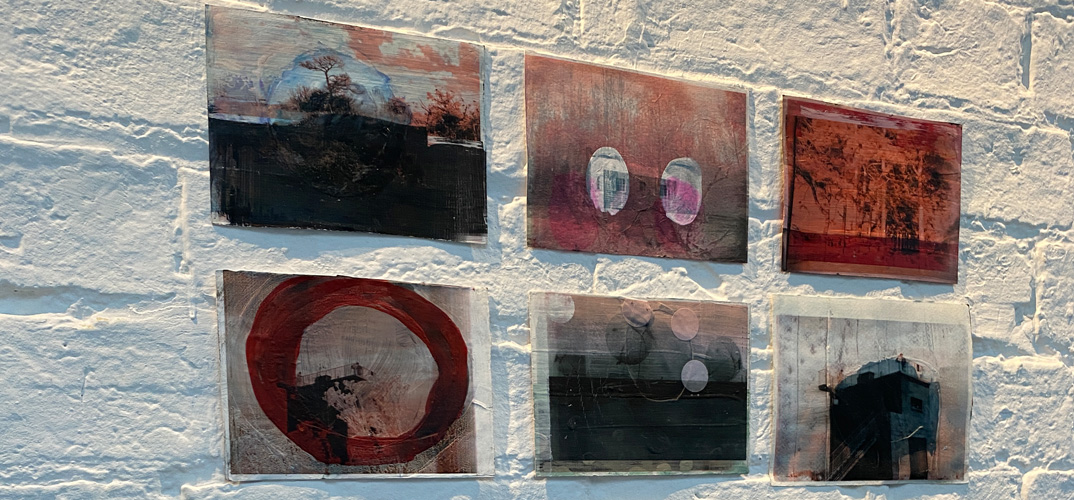Herts artists explore the aftermath of human activity in Cambridge exhibition

Two University of Hertfordshire artists are launching an exhibition of small scale works that explore the aftermath of human activity on our ecology.
Drawing on themes of environmental damage and the detritus of our consumerist and militaristic world, Test Sites will examine the psychological and emotional impact of a toxic Anthropocene through a series of works on paper and small sculptures.
The exhibition, by award-winning Herts researchers Sam Jury and David Kefford, will run from this Friday (22 March) until 4 April at Quip and Curiosity, Cambridge, and explores both artists’ ideas of displacement and dis-ease in both the landscape and the self.
Jury’s work in the exhibition was created by using a faulty printer to produce 130 postcard 'objects' constructed from painting, drawing, collage and digital print. The overlaying prints feature images of abandoned buildings and post-conflict areas, including nuclear test sites and old military bases. Jams and malfunctions in the printer create scars, judders, misalignments and ink dumps, creating a unique quality of chance in these obsessively repeated images.
'Postcards, to me, suggest intimate communication' she said. 'They’re something you would send to a friend or a loved one. But the content of these works draws from origins that have a melancholy or bitter-sweetness that comes from an aftermath, an area existing in the wake of an unnamed event.
'I also saw this as a collaboration between woman and machine. The postcards are expressions of a mis-purposed machine, through chance interactions which cannot be replicated, particularly important to me in the age of AI.'
Works on paper from Kefford depict elusive and fragmented images of our consumerist world. Collaged from lifestyle and nature magazines, these are constructed on small pieces of paper, further distorted by cutting, scraping and smearing ink. Alongside these are Kefford’s small sculptures, created from waste and discarded objects using low-fi methods of glue, tape, plaster.
He said: 'The paper works function like a visual diary using materials to hand and are made with immediacy, intensity and intimacy. Meanwhile, the sculptures are born out of a process of gathering scraps and fragments of collected ephemera that celebrate waste and use discarded matter to re-appropriate the overlooked.
'Working in this low-tech way enables an experimental approach to materials that transform themselves into something other, unknown and beyond human.'
The artists’ residence at Quip and Curiosity will open to the public from 22 March.